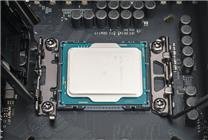The Rise of Arm Architecture and Its Competition with x86: An In-Depth Analysis
Summary:
- Arm architecture is gaining significant traction in both the server and PC markets, largely fueled by advancements in artificial intelligence.
- However, recent developments from AMD and Intel suggest that x86 may maintain a competitive edge, particularly in energy efficiency and performance.
- The ongoing evolution of both architectures presents an intriguing dynamic in the tech landscape.
In recent years, Arm architecture has carved out a substantial presence in the server and PC markets, thanks in part to innovations from major players like Amazon, Apple, and Qualcomm. This upsurge is attributed to the broader adoption of artificial intelligence (AI) technologies, which have propelled Arm’s growth trajectory.
According to Arm’s CEO, Rene Haas, the company’s expansion within the data center sector has been significantly influenced by AI. Since 2021, the number of startups leveraging Arm chips has skyrocketed by 12 times, with the total count of server clients utilizing Arm-based processors increasing to 70,000—a remarkable 14-fold rise since 2021.
Market forecasts from Bernstein Research anticipate that by 2023, nearly 10% of global servers will be powered by Arm server CPUs, with Amazon Web Services (AWS) accounting for half of that demand, housing over 2 million self-developed Graviton chips.
As Apple transitions its Mac lineup to proprietary M-series processors, and Qualcomm introduces Snapdragon X Elite processors for PCs, Arm is also securing a larger footprint in the personal computing arena. Noteworthy is Arm’s announcement at the COMPUTEX 2025 exhibition that almost 50% of its shipments to leading cloud service providers are based on Arm architecture, with the PC and tablet markets projected to comprise 40% of overall shipments.
The success of Arm can be attributed to its exceptional AI computing performance and energy efficiency. Furthermore, Arm solutions offer more competitive pricing compared to traditional x86 architectures, enhancing their appeal in various sectors.
However, not all industry voices are aligned with this optimistic view for Arm. At the recent IFA 2025 event in Berlin, Jack Huynh, AMD’s Senior Vice President and General Manager, expressed skepticism regarding Arm’s competitive advantages over x86. He highlighted that AMD has pocketed ample gains in both AI performance and energy efficiency, effectively countering the narrative that x86 architectures lack efficiency. Whether laptops are powered by AMD Ryzen or Intel Core processors, Huynh underscored that they can deliver extended battery life while capitalizing on the robust x86 ecosystem.
Despite the commendable energy efficiency of Apple’s M-series processors and Qualcomm’s Snapdragon X-series PCs, this advantage is diminishing as AMD and Intel unveil their latest AI-centric chips. For instance, Intel’s Lunar Lake boasts a Neural Processing Unit (NPU) capable of 120TOPS, with battery life claims of up to 29 hours for various laptop configurations. Simultaneously, AMD’s latest APUs showcase leading performance-to-energy-efficiency ratios and are becoming increasingly integral to laptops, MiniPCs, and handheld consoles.
With the flagship Ryzen 9 AI MAX+ 395, which offers performance levels up to 126TOPS, AMD demonstrates a robust challenge to Arm’s standing. Analysts recognize that the growth of AI PCs is dependent on the foundation of high-performance traditional PCs, a sentiment echoed by Huynh during discussions of AMD’s roadmap for future hardware and software developments.
Nonetheless, it’s essential to acknowledge that the fate of Arm architecture is far from sealed. The landscape remains dynamic, with x86’s foothold tightly secured—especially with the introduction of new product lines like Intel’s Panther Lake and AMD’s Medusa Point.
In summary, while Arm architecture is undoubtedly making impressive strides, the collective strength of AMD and Intel in the x86 domain ensures that the competition will remain fierce. The advancements in both architectures continue to influence the computer industry’s trajectory, positioning them as integral components of future technological solutions. As both ecosystems evolve, close attention will be required to gauge how this rivalry shapes user experiences and industry standards moving forward.







